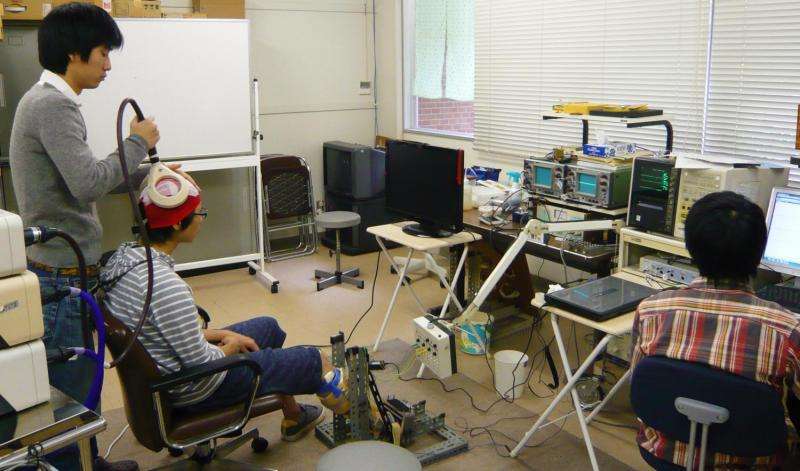After an injury, practicing movements at different speeds improves certain nerve functions

Changes in one circuit of nerves, but not another, in the spinal cord depend on how quickly muscles must move to complete a task, according to results from the Human Motor Control Laboratory of Professor Kozo Funase, PhD, at Hiroshima University. The results could influence physical therapy routines for patients struggling to control their bodies after a stroke or spine injury.
Multiple different types of circuits of nerves control the communication between motor and sensory nerves in the spine. One, called presynaptic inhibition, works like a gate to control incoming sensory information and prevents muscle spasms. Another, called reciprocal Ia inhibition, coordinates pairs of muscles by making one set relax so another can contract, like when your triceps stretches out so you can flex to show off your biceps.
Several studies showed that motor skill training influences these neural circuits, but scientists had not considered the speed of the training.
"We wanted to investigate if practicing a particular movement when moving slowly could change the nerves more or less than practicing the same movement at full speed," said Mr. Shinji Kubota, a former physical therapist and current PhD student in Prof Funase's lab.
The results suggest that different circuits of nerves respond differently to movement speed. The presynaptic inhibition circuit becomes more sensitive to signals telling muscles to contract after repetitive movements of any speed. The reciprocal Ia inhibition circuit becomes more active after repetitive fast movements, but is unchanged after repetitive slow movements. More inhibition of the nerves means the muscles will be less active.
"During physical rehabilitation after a stroke or a spinal cord injury, a common problem for patients' is that their muscles are spastic – they contract and become stiff or cause uncontrollable shaking. Spasticity is speed dependent, so the spastic symptoms can get worse when patients try to move quickly, but slow movements are usually easier," said Kubota.
Motor skill rehabilitation may be more effective if therapy routines reflect which type of neural circuit controls the physical movement.
Skillful movements, like moving the arm to reach for a cup, are controlled by the presynaptic inhibition circuit which is unaffected by movement speed, so practicing at a slower-than-normal speed that avoids spasticity could still produce positive changes. In contrast, walking relies on the reciprocal Ia inhibition circuit to repeatedly switch muscle activity from contracting to relaxing and this circuit is improved only after practice sessions of fast movements.
Advocating for scientific rigor, Kubota is cautious about claims for immediate clinical applications of the results.
"Injuries to the brain or spine present all kinds of challenges for therapists to consider. Understanding the mechanisms underlying changes in neural circuits will probably be a key element in developing effective rehabilitation approaches for people with central nervous systems disorders. My next goal is to create an animal model of stroke injuries and investigate if there is any link between changed nerve function and improved physical performance," said Kubota.
More information: Shinji Kubota et al. Changes in the Spinal Neural Circuits are Dependent on the Movement Speed of the Visuomotor Task, Frontiers in Human Neuroscience (2015). DOI: 10.3389/fnhum.2015.00667




















